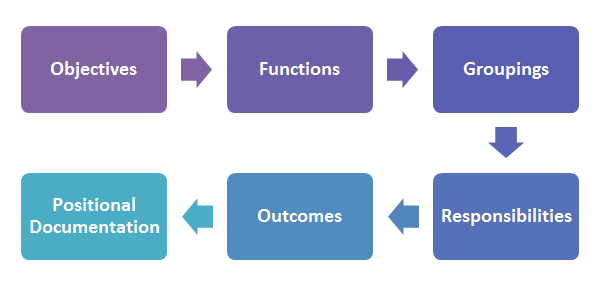The organisational structure defines activities and responsibilities in accordance with the achievement of organisational objectives. All too often though, a business’s organisational structure is not the product of strategic thought, but a manifestation of operational demands.
Most businesses start of with a flat management structure, which while it may sound trendy, does not scale well as it inherently inhibits the ordered delegation of responsibility. This acts as a real limit to the ongoing growth of the business, as manager’s time gets filled with low-order tasks.
In many businesses that are not properly structured, new employees are added to deal with an ever increasing workload. With every new employee, there is a reshuffle of duties as attempts are made to balance individual workloads. The change of individual roles often results in a drop in specific task performance and a general blurring of responsibilities. This in turn creates unanticipated performance and management issues that can lower organisational effectiveness.
A good organisational structure is a clean-sheet design, informed by clear definitions of all functions the business requires for the achievement of its short term and long term objectives. In this way roles can be more easily constructed and all associated documentation generated. The result is a clean and efficient organisation that makes sense to everyone.


